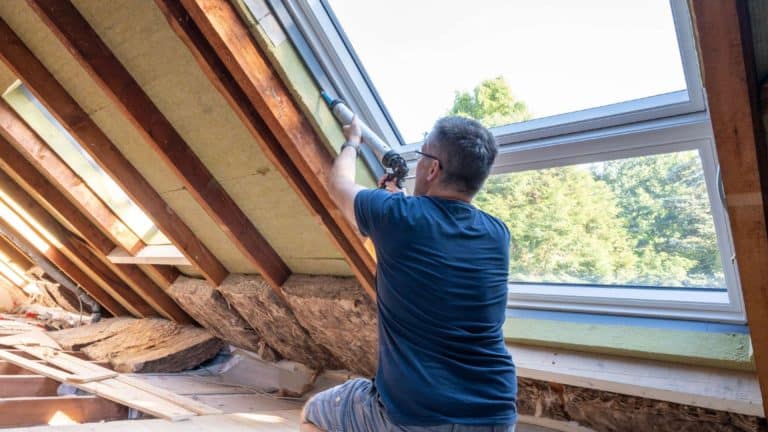
READ THE ‘WHERE THE CANDIDATES STAND’ BLOG SERIES
In this blog, we examine the policies and positions of Donald Trump, the incumbent and Republican nominee for President of the United States. Also in this series we profile Joe Biden, former Vice President of the United States and the Democratic nominee for President.
Donald Trump attended the New York Military Academy and spent two years at Fordham University before receiving a bachelor’s degree in economics from University of Pennsylvania’s Wharton School of Finance and Commerce. Prior to election as President in 2016, Trump was a real estate developer and businessman who owned, managed, or licensed his name to hotels, casinos, golf courses, resorts, and residential properties around the world. Trump also produced and hosted a reality television series, The Apprentice. In 2019, Trump became the third U.S. President to be impeached by the U.S. House of Representatives. Trump’s campaign website can be viewed here.
Renewable Energy and Energy Efficiency
Trump’s America First Energy Plan, unveiled at the start of his Administration, made no mention of solar, but in January 2018 Trump placed tariffs on imported solar cells and modules for a period of four years. Since solar competes with other low-cost fuel sources such as wind and natural gas, at such thin margins, even the slightest increase in the price of modules can mean that homeowners, utilities and businesses may choose an alternative for their power generation. A conservative estimate by the Solar Energy Industries Association (SEIA) is that these tariffs may have cost the industry 62,000 jobs in the short term.
Trump has repeatedly stated that “windmills cause cancer” and has reiterated that position despite the lack of evidence or data. His critique of wind energy began at least a decade ago when he purchased property in Scotland near a planned wind farm and sued against the development. In the years since, he has continued to campaign against wind energy more generally.
The first national lightbulb standard became law in 2007 but in late 2019 the Trump Administration stalled the second phase of this policy – which was to have taken effect on January 1, 2020 – designed to phase out older incandescent bulbs and require Americans to use energy-efficient light bulbs.
Climate Change
Contrary to universal scientific consensus and findings by science agencies throughout the U.S. government, Trump maintains as he has for years that climate change is a ‘hoax’ and has offered no plan to address the climate crisis. Furthermore, the Republican Party platform, as in 2016, outrightly dismisses the threat from climate change and efforts to mitigate it.
Most recently, Trump stated at a wildfire briefing on September 14 in California: “It’ll start getting cooler. You just watch,” to which Wade Crowfoot, California Secretary for Natural Resources said, “I wish science agreed with you.” And Trump responded: “Well, I don’t think science knows actually.” At the same event, he assured listeners that the world “will start getting cooler,” despite clear scientific evidence to the contrary.
In 2018, the Trump Administration rolled back the Obama-era Clean Power Plan which set the first federal limits on carbon pollution from power plants and encouraged investment in cleaner, safer energy sources like wind and solar. Trump weakened requirements for testing and repairing methane leaks in drilling operations rescinding the Obama Administration’s methane emissions rule; and earlier this year rolled back the Mercury and Air Toxics Standards that were put into place in 2011 to eliminate emissions of mercury, arsenic, and other toxins from coal and oil fired power plants.
And in late 2019, the Trump Administration formally began the United States’ withdrawal from the Paris Climate Agreement.
Electric Transportation
In addition to electricity sector roll backs, the Trump Administration rolled back Clean Car Standards which were designed to save consumers money, reduce transportation pollution, and spur innovative climate solutions. The new standards put forward in the Trump Administration’s Safer Affordable Fuel-Efficient (SAFE) Vehicles rule will lower the benchmark targets for fuel efficiency for cars being manufactured from 2021 to 2026 and prevent states from stepping in to limit carbon pollution emitted by cars with more stringent mileage standards. The likelihood is that these weaker standard may slow the transition to electric vehicles which are more efficient than internal combustion engines vehicles and have a lower total cost of ownership.
In a March 2019 rally in Michigan, Trump spoke to range anxiety and electric vehicles when he said:
“And it’s got to be of course an electric car, even if it only goes…160 miles? What do you do with 160 miles…Darling, where do I get a charge?”
Trump also said in late 2018, as part of a criticism of GM’s strategy to transition to more electric cars, “It’s wonderful to have it as a percentage of your cars, but going into this model that she’s doing I think is a mistake,” said Trump at that time, referring to GM CEO Mary Barra.
Energy Equity and Energy Burden
While Trump hasn’t directly commented on the issue of energy equity in speeches or on his campaign website that we can find, the EPA has postponed an internal speaker series on environmental justice after a memo from the Trump administration called such trainings “un-American propaganda.”
The Trump Administration’s repeated rollbacks of environmental policies from previous administrations will disproportionately impact the most vulnerable populations in our country, who already suffer the most from the economic and public health impacts of climate change and energy burden. Estimates are that rolling back the Clean Power Plan alone will contribute to as many as 4,500 premature deaths each year by 2030.
High-Risk Energy (Coal, Nuclear, Oil, Gas)
Trump and his administration acted aggressively to increase financing for coal and fossil energy projects allowing for exports of energy resources to the global market. During his first campaign and early in his presidency, Trump repeatedly called ‘clean coal’ an important energy source for the U.S.
Trump has not specifically referenced nuclear energy much, but in 2018 he signed legislation to bolster existing nuclear power plants and earlier this year his Administration released a plan for revitalizing the U.S. nuclear energy industry.
The Trump Administration has a particularly consistent record supporting oil and gas drilling. In early 2018, the Department of the Interior proposed its largest oil and gas lease of over 78 million acres in the Gulf of Mexico; and Trump signed an Executive Order to expand offshore oil and gas drilling and open more leases to develop offshore drilling, ultimately proposing opening 90% of the nation’s ocean acreage to drilling. However, in September 2020, Trump partially reversed his position on offshore drilling and signed an order expanding the ban on oil drilling off the coast of Florida for another 10 years. For the first time ever, this ban includes the entire Atlantic Coast of Florida. Trump has consistently been supportive of onshore drilling as well – giving approval for the construction of the Dakota Access and Keystone XL pipelines along with approval for drilling in National Parks and National Forests.
If you are interested in learning more about where your state’s candidates for federal and state office stand on energy, click here to access the entire 2020 blog series. We encourage readers to register to vote well before registration deadlines, which are in early October but vary by state, and vote in the general election on or before November 3, 2020. For voting information, including updates about the impact of COVID-19 on voting, click here.
READ THE ‘WHERE THE CANDIDATES STAND’ BLOG SERIES
#CandidatesOnEnergy2020



